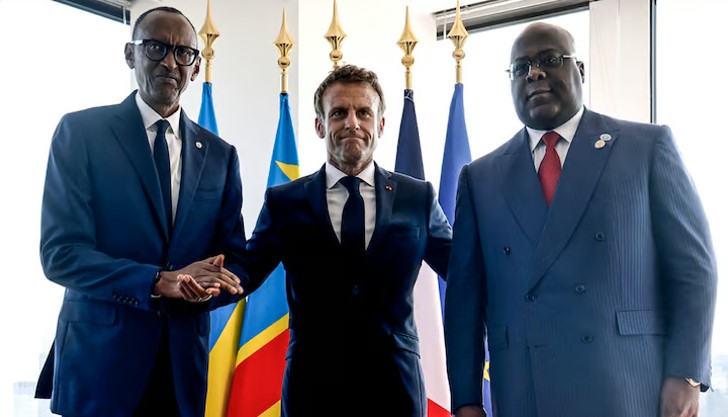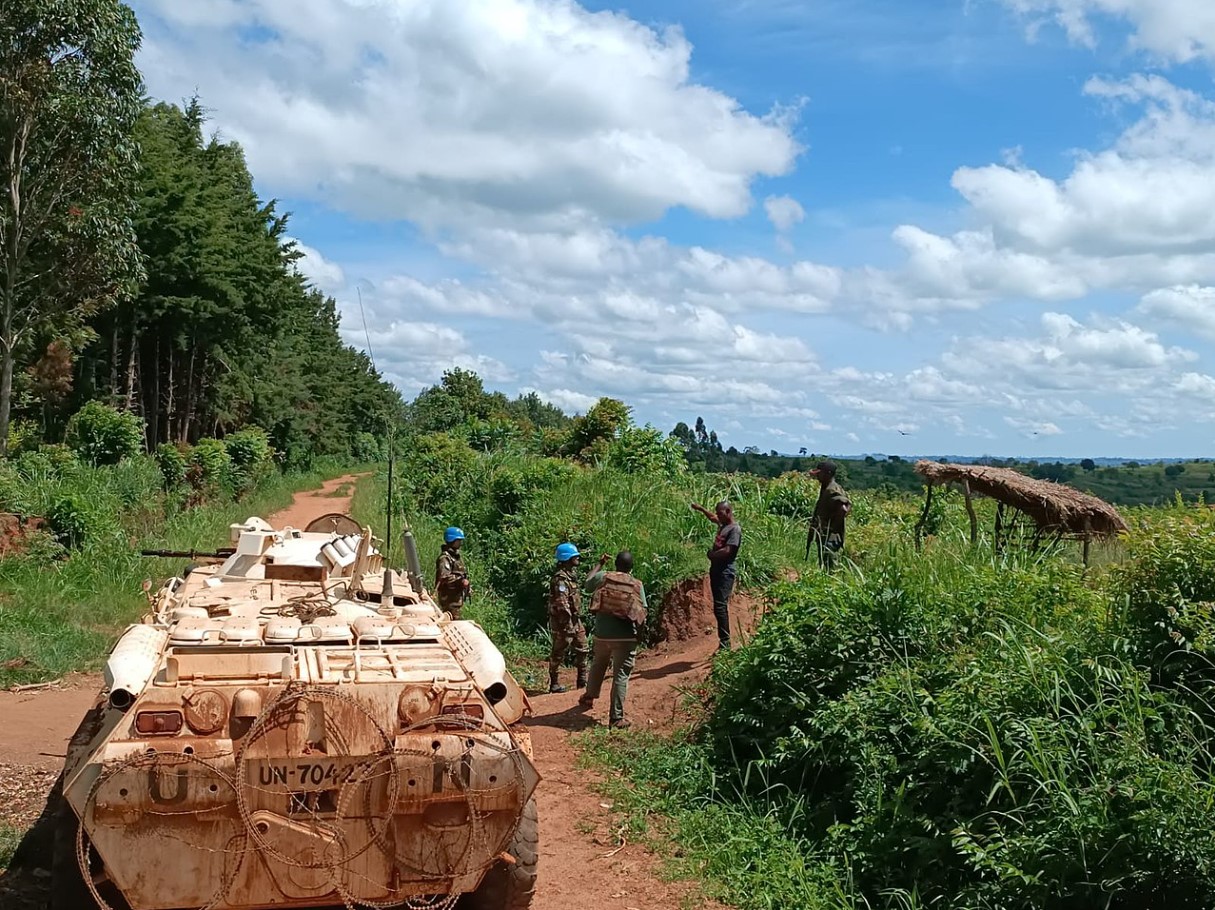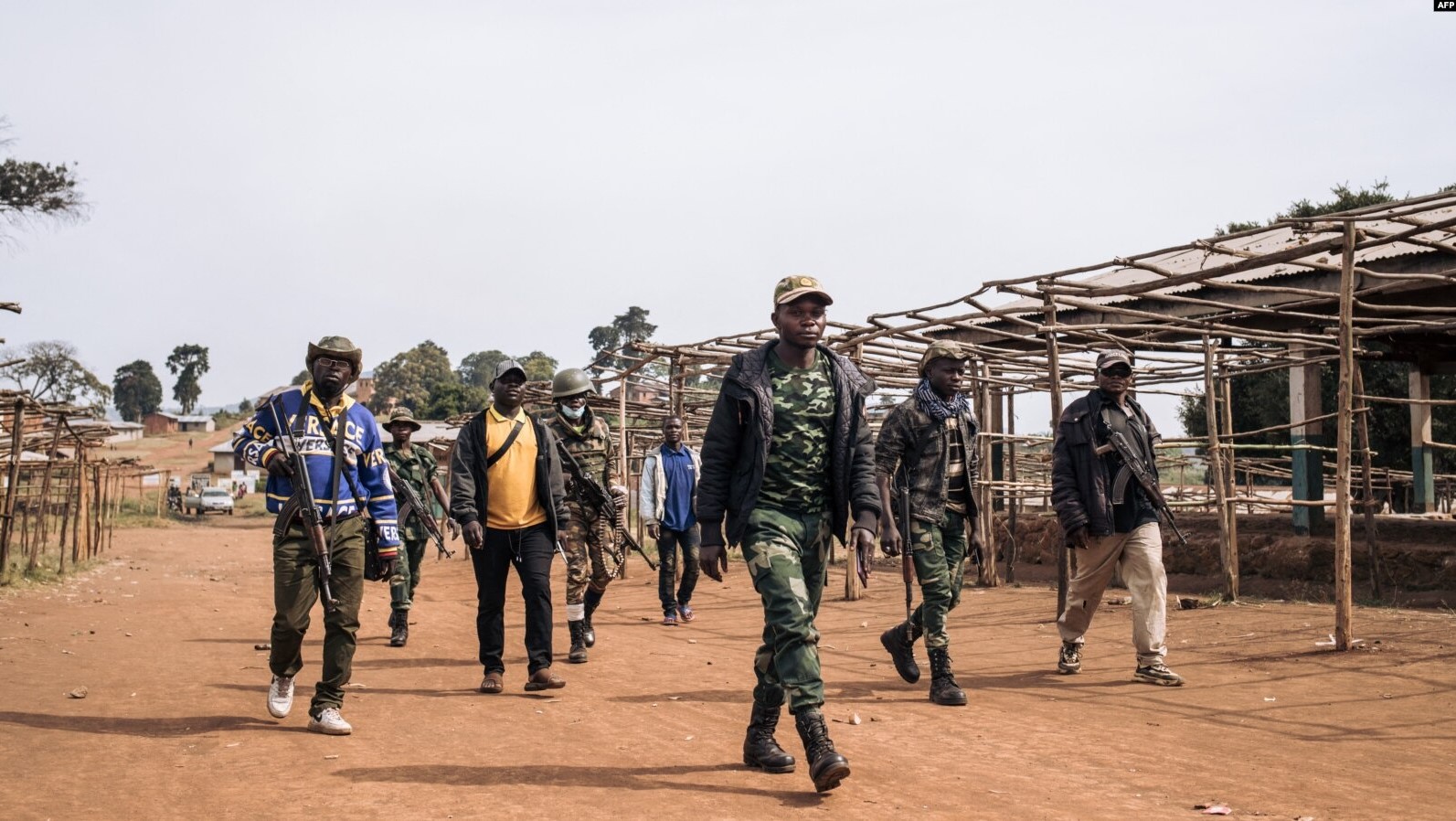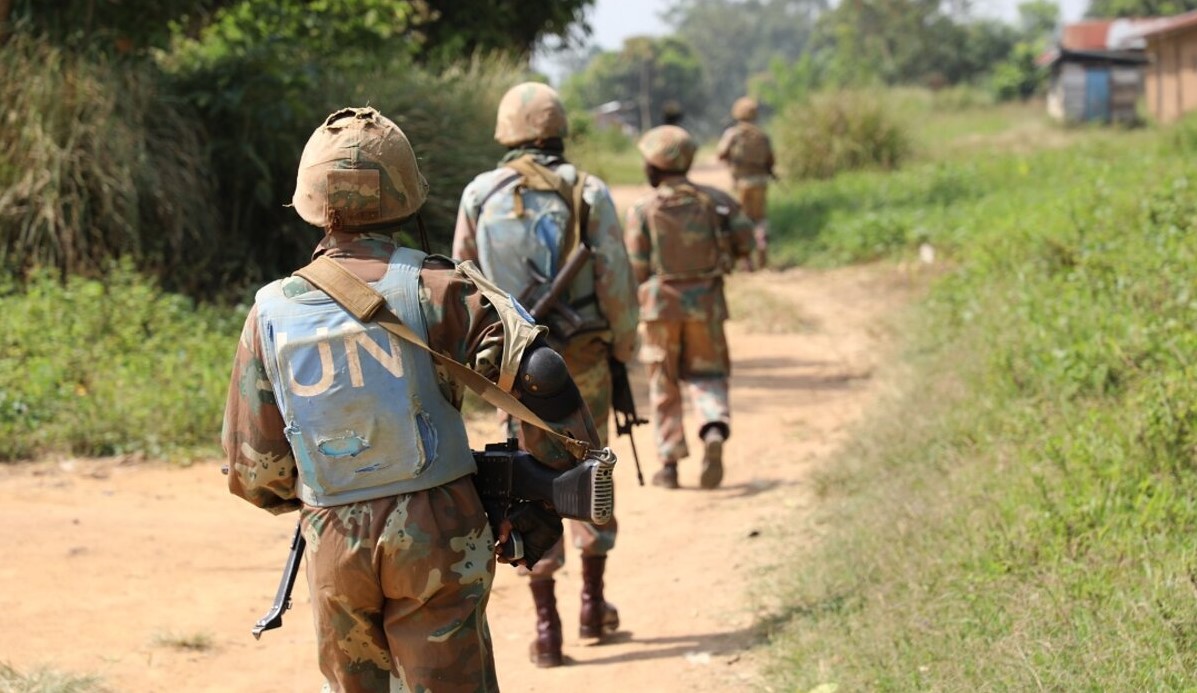The United Nations Organization Stabilization Mission in the Democratic Republic of the Congo (MONUSCO in the DRC) recently announced the expansion of its troop presence in the eastern DRC province of Ituri after a sharply heightening wave of violence. This wave is primarily driven by the Islamist Allied Democratic Forces (ADF) and CODECO, though insecurity prompted by other groups continues to rise as well.
A Temporary Expansion
The UN’s decision to expand its troop presence in Ituri comes after recent reports that showed approximately 100 civilians had been killed by the ADF since May 25th. The ADF’s attacks took place in both Ituri and North Kivu. The decision was set on after clashes between CODECO and Zaire, another armed group, occurred in Ituri as well.
Notably, this increase in manpower comes after a similar increase took place in April, which was prompted by attacks from CODECO which killed civilians, as well as kidnappings from Zaire. The UN managed to rescue five civilian hostages taken by Zaire.
However, while the UN may be increasing their presence in Ituri, it is to be short lived. The UN is soon to leave the DRC.
After repeat controversies, growing anti-UN sentiment, and accusations by the government of inaction, the DRC and MONUSCO came to an agreement for the UN to withdraw from the DRC by the end of the year. Several thousand MONUSCO troops have already withdrawn from the DRC, while the remainder continue operations to the best of their ability.

The DRC government has accused the UN of failing to meaningfully change the security situation in the DRC for the 25 years they have been there, and thus has ordered them to leave the country. In their place, the DRC has brought in the Southern Africa Development Community (SADC) to try and bring an end to insecurity in the east.
Despite the SADC’s deployment having already begun, there are questions being raised as to if the SADC will truly be able to fill the vacuum being left by MONUSCO’s withdrawal. Since deployment, the SADC has been unable to dislodge any of the armed groups they were sent to fight. Instead, the SADC and the DRC have primarily been on the defensive since late January.
In mid-January, the DRC and the SADC began an offensive against the largest drivers of insecurity in the east; the M23 rebels, in the North Kivu province.
This offensive, which ended a US brokered ceasefire, quickly backfired as the DRC and SADC rapidly lost ground to the counterattacking M23. Since early February clashes have been taking place around a number of key towns. The M23’s counteroffensive has stalled in some areas, particularly in the south around the vital town of Sake, but has continued to steadily seize more and more towns in other areas of North Kivu.
Presently, Sake remains under threat, but the town of Kanyabayonga has also come under threat. The general area of Kanyabayonga is home to over a million people.
The SADC and the DRC have received accusations that they are focusing on the M23, who control large swathes of North Kivu, and thus ignoring other armed groups. They have rejected these accusations, stating they are tackling all hostile armed groups in the region.
“In accordance with SAMIRDC’s [the SADC’s mission in the DRC] mandate, in cooperation with the FARDC [the Armed Forces of the DRC], our troops will conduct operations to neutralise negative forces and illegal armed groups in the east of the DRC in order to restore and maintain peace and security, create a secure environment and protect civilians and their property in the event of imminent threats and attacks” -Major General Monwabisi Dyakopu, the commander of the SADC’s force in the DRC
At the end of May, one soldier of the SADC was killed, with an additional 13 injured, in clashes with the M23. Further, the M23 managed to capture two APC’s from the SADC, representing a significant loss for the SADC.
AFC – COMMUNIQUÉ OFFICIEL DU 30 MAI 2024. ?? pic.twitter.com/ZK660cPfin
— Lawrence KANYUKA (@LawrenceKanyuka) May 30, 2024
Both the UN and analysts questioned the ability of the SADC to effectively combat an insurgency such as the M23 prior to their deployment. The terrain of North Kivu, as well as the size, equipment, and maneuverability of the M23 make it a necessity that a large force with sufficient air support, especially from helicopters, be sent to combat them.
The SADC has neither of these things. South Africa, the head of the SADC’s intervention force, has very limited air power, and the SADC is only sending 5,000 troops to support the DRC. While not a small force, it is insufficient to take on the task of combatting both the M23, and any of the other over 120 different armed groups which operate in the DRC’s east.
Rwanda has been accused by many of supporting the M23, an accusation they have continually denied. However, this support is a likely factor on why the M23 has managed to counterattack so successfully since January. In February the UN claimed to have spotted a Rwandan Surface to Air Missile (SAM) system in M23 territory after it fired upon one of the UN’s observation drones.

The SAM system marks a significant escalation in Rwanda’s support for the M23, which has already included significant equipment and financial support, as well as alleged covert deployments of Rwandan soldiers to fight directly alongside the M23.
Escalating Violence
As has been the story for several years now, violence continues to escalate in the North and South Kivu provinces, and Ituri.
Recent reports from the DRC and the UN suggest that, on top of the M23, CODECO, the ADF, and Zaire, the Wazalendo are becoming an additional factor in insecurity.
The Wazalendo, or the Voluntary Combatants for the Defence of the Homeland, are meant to be a civil defence militia. They were formed in May of 2023 after President Felix Tshisekedi called for the formation of such a militia in November.
Primarily fighting against the M23, the Wazalendo operate in direct cooperation with the DRC’s military, sometimes even wearing their uniforms.
However, the Wazalendo has now become a source of insecurity amongst some of the populations they are supposed to be defending. In particular, the Wazalendo has participated in mining operations in some of North Kivu’s mines, smuggling the resources out of the country for money, along with a number of other crimes.

The actions of the Wazalendo has prompted the government to ban them from carrying weapons when they are within Goma, the provincial capital of North Kivu, though they continue to cooperate with one another.
What Are Zaire and CODECO..?
Zaire and CODECO are two rival groups that base themselves within the DRC’s Ituri province. Though they are lesser known than the M23 and the ADF, CODECO has been blamed for violence resurging in Ituri in 2017.
In CODECO’s origins, it was founded in the 1970s as an agricultural cooperative of the Lendu people in Zaire (what is now the DRC). The group was formed to promote agriculture in Ituri, but also in order to act as a mouthpiece for the demands of the Lendu against the Hema people, as well as to speak against what they said was foreign exploitation of Congolese natural resources.

The Hema were favoured more than the Lendu under the Belgian colonial administration, a policy which was continued by Zairean dictator Mobutu Sese Seko. The Lendu and the Hema also face key differences in practices, with the Lendu being more agriculturalist, and the Hema being more pastoralist.
The outbreak of the 1999-2003 Ituri conflict saw the group transform from an agricultural collective into a loose association of Lendu militias. The conflict ended in 2003, which in turn ended violence between the Lendu groups and the Hema groups, and CODECO’s presence declined. Despite the decline, however, the group did not fully disarm, and several of the militias began stockpiling weapons.
In 2017, CODECO, under the leadership of Justin Ngudjolo, began attacks in the Djugu district. Attacks witnessed a sharp increase in 2019, which prompted the UN to accuse Lendu groups, not specifically naming CODECO, of carrying out massacres against Hema civilians. Within the same year, shortly after an attack attributed to CODECO, the newly elected President Felix Tshisekedi vowed to “eliminate” the group.
Fighting escalated further in 2020, with the UN accusing CODECO directly of massacres “akin to crimes against humanity.” Though the attacks from CODECO coincided with an increase in attacks by Islamic militant groups, they were not coordinating with each other. A ceasefire was signed in August of 2020 between CODECO and the government, which was broken by October.

Since resuming attacks in 2017, CODECO has killed at least 1,800 people as of 2022, with many having also been killed in 2023 and now 2024.
CODECO oftentimes targets natural resource sites, such as gold mines. Hema groups also remain one of its primary targets. CODECO remains based in the Ituri province.
There is less information on Zaire, an armed group primarily comprised of Hema. However, the group has stated its founding was to act as a defence from CODECO, which had been carrying out attacks against the Hema.
Zaire has carried out attacks against Lendu civilians on a number of occasions, and regularly clashes with CODECO. Both CODECO and Zaire vie for control of mines within Ituri, which they exploit and smuggle resources from in order to fund themselves.

